Requiem for Radio: New Dead Zones
interactive sculptural installation - 2016
plumbing, interactive electronics, audio
scale model of RCI radio tower site
13 towers, 13 speakers
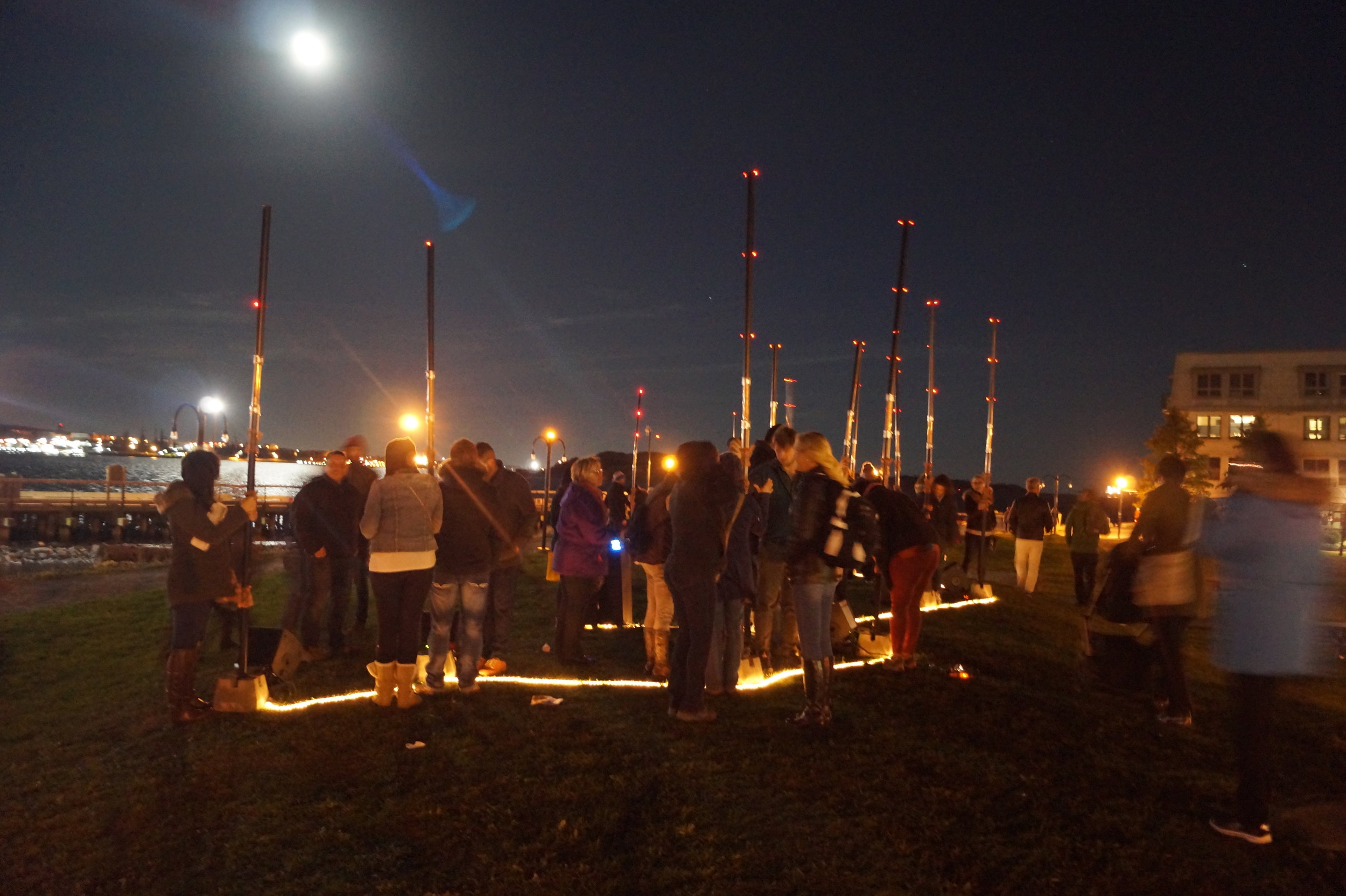
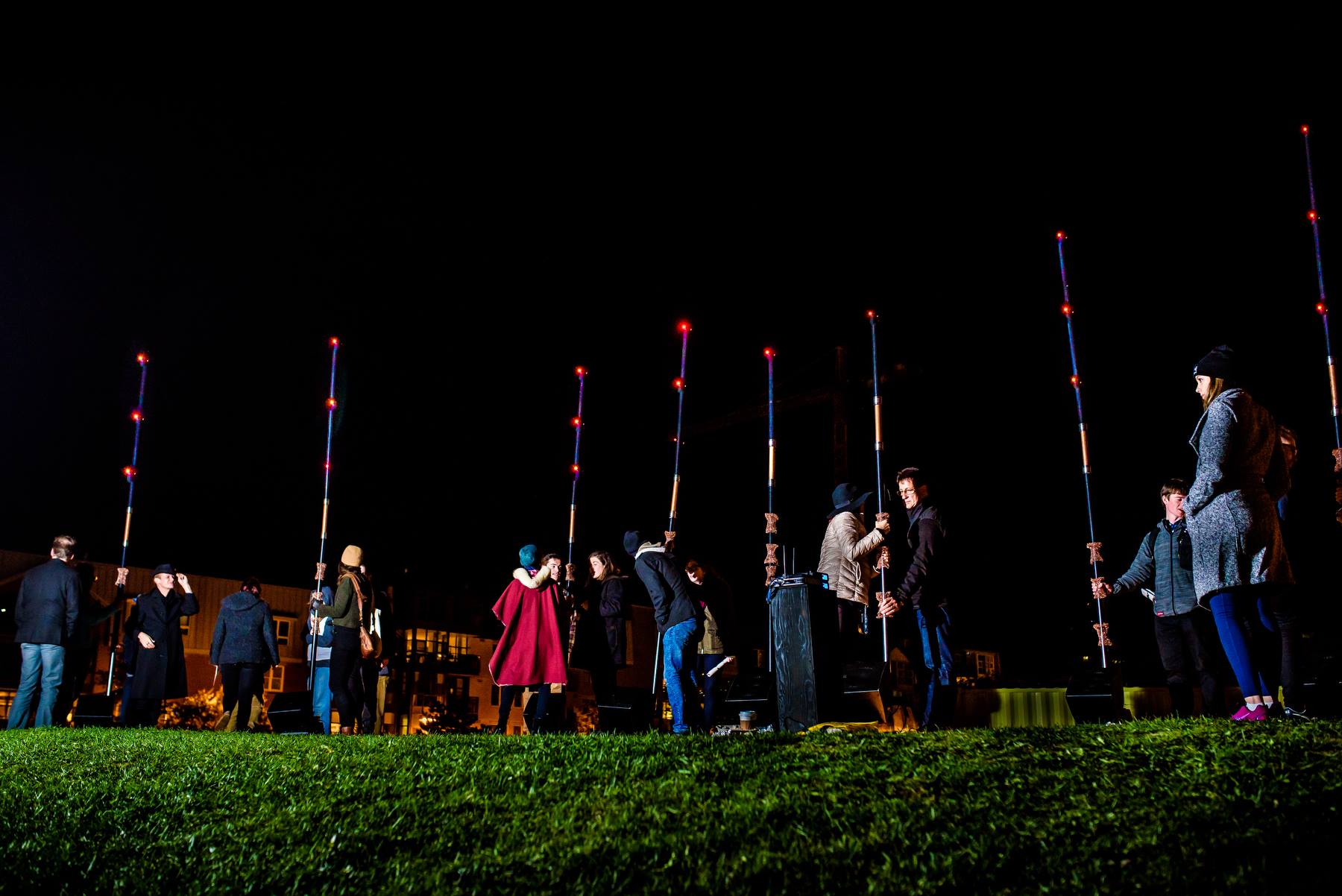
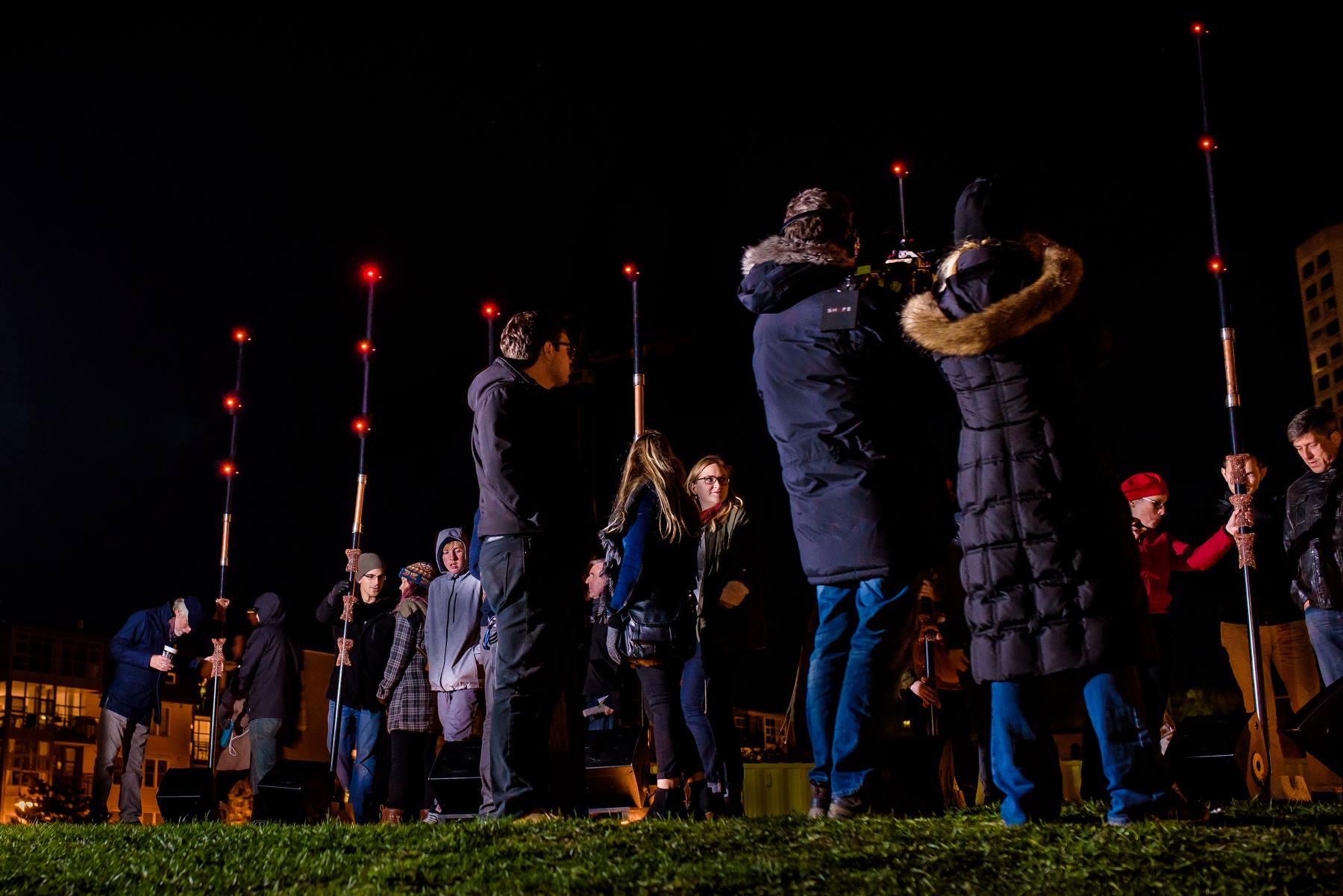
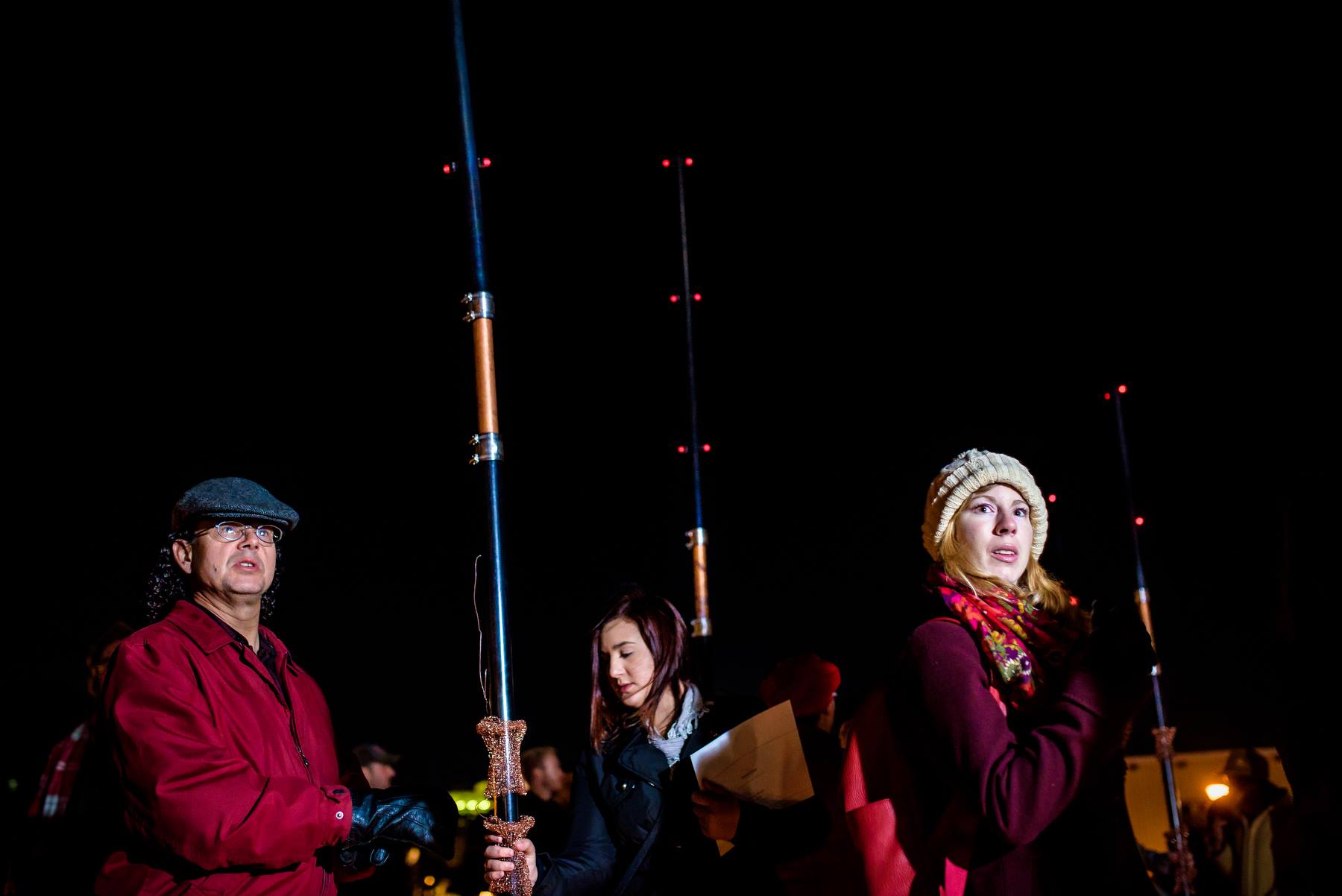
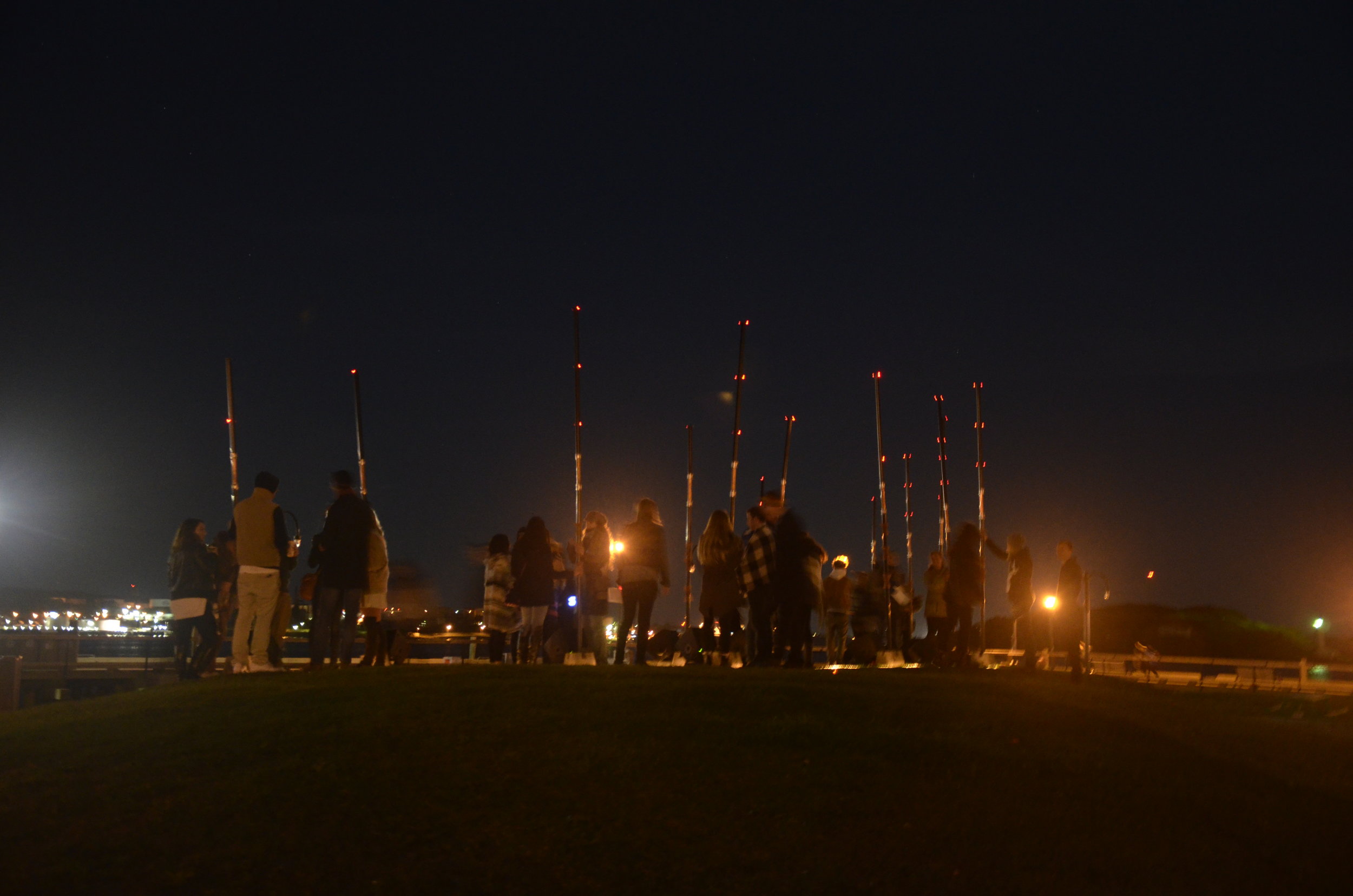

Architecture, technology, history, and the human body come together in this near-supernatural conjuring of the spirits of the Radio Canada International shortwave radio towers.
Exhibition History
2015 Nocturne: Art at Night, Halifax, NS (Canada)
Mixed Motives, anchor project curated by Michael McCormack
Requiem for Radio: New Dead Zones is an interactive installation about the disappearance of shortwave radio transmissions. It is a requiem for the Radio Canada International shortwave site that was located near the border of New Brunswick and Nova Scotia and transmitted shortwave radio around the world from 1944 – 2014.
In radio terminology, a dead zone is an area where radio signals cannot be received due to propagation difficulties. With the RCI site gone, there are now a lot more dead zones in the world, not due to interference, but rather because the transmissions have ceased.
This interactive installation involves 13 towers with copper capacitance sensors positioned around the space to create a scale model of the recently demolished RCI site. Each tower is dedicated to one of the radio towers that stood there. The towers are placed in relation to one another exactly according to the placements of the original radio towers, and their heights are built to the scale of the height of the tower they represent.
The public is invited to walk among the scale model of the site and to touch the towers and to trigger the sounds of the RCI towers – using capacitance and human touch to play the ghosts of the radio towers.
Each copper sensor on each tower in this installation is connected to a small microcontroller which sends a wifi signal to a mac mini running a program in supercollider that then triggers the audio recording of that particular tower and sends the signal to the speaker at the base of that tower.
The audio samples that are played, are recordings that I made of the towers in 2013 by placing contact microphones on the base of each of the RCI radio towers. Each tower stood hundreds of feet tall in the high marsh winds like giant guitar strings, and by placing contact microphones at the base of each tower, I captured beautifully complex and haunting drones replete with undulating harmonics and subharmonics. Each tower had its own distinct voice and sound, and therefore each theremin will trigger the specific sound recording of the tower it represents. These recordings were then filtered with a hum remover used in reverse in order to focus on a primary frequency (and it's related harmonics) for each tower, so that each tower becomes a specific note in a chromatic scale, from C3 to C4. 13 towers, become 13 notes of a chromatic scale, from tonic to tonic, so that the installation can essentially be played like a musical instrument.
The result is an installation that stands glowing red and silent when no one is touching it. But if one individual touches one tower, only one drone will be heard, but if thirteen people are touching all 13 towers, a choir of 13 drones will be heard. With enough people working together, chords and melodies can be played on them as well. The electrons from the human bodies pass through to the tower by touching the copper pads, and trigger the sound recordings (the ghosts) of those historic radio towers in a choir of drone songs.
Requiem for Radio is a larger body of work with five separate components
- Requiem for Radio: Pulse Decay (solo performance for theremin triggering audio and images of radio towers)
- Requiem for Radio: New Dead Zones (interactive installation - scale model of RCI radio tower site triggering audio)
- Requiem for Radio: Radio Cowers (instrument built from cow bone, cow hide, electronics, and radio transmitter)
- Requiem for Radio: Full Quiet Flutter (performance that integrates the previous three elements)
- Requiem for Radio: Deviant Receptions (a revisitation of the radio sink from the Marshland Radio Plumbing Project)
History and related projects
My work with radio waves began in 2009 with the Marshland Radio Plumbing Project a still ongoing project which includes a large sculpture (a sink that plays the radio), a series of 4x5foot photographs (in production), hand-made radios, and various maps and electronic schematic drawings. My work with the radio sink, led to further research on radio waves and therefore to analogue television broadcasts, which in turn resulted in a multifaceted projected entitled Last Days of Snow. Last Days of Snow involved several different projects (Nightlights Like Fireflies: a site specific intervention – Waiting for the End: a series of performative loops on CRT monitors – Final Transmissions: documentation from across Canada of the last signals cutting out – and The Begending of the Universe – a performance involving video projections and physics formulae). Some aspects of this project (particularly “Final Transmissions”) are continuing to be developed.
The Subject
Erected in 1938, the RCI site was transmitting by 1942. RCI broadcast to Europe, Africa, South America, and the Arctic. In addition to Canadian broadcasts, this site also served as a relay for Radio China, Radio Japan, Radio Korea, Voice of Vietnam, and Vatican Radio. It was the only high power shortwave relay station in Canada.
While the broadcasts from these towers were intended for an international audience, they also had an immediate impact on the locals who lived within a 50 km radius. Many local residents reported hearing radio broadcasts emanating from unusual household appliances, including kitchen sinks, bathtubs, toasters, refrigerators, telephones, and light fixtures. On an emotional level, the radio towers tied in to a very deep sense of home for many residents, as they stood as an incredibly distinctive landmark when travelling along the trans-Canada highway. In addition to their striking visual presence on the flat, sea level landscape, they also added to the invisible landscape of the region through the radio waves that they transmitted, as well as through the folklore and rural mythology that they inspired.
A turn of events
In 2012, they announced that the site would be shut down. The last Canadian international shortwave broadcast was sent in June of 2012, the final international relays were sent in October 2012, the last arctic broadcast (and the final broadcast to ever transmit from this site) was sent in November 2012. Here is a quote from Mark Montgommery, host of the Link, from the final RCI broadcast on June 24, 2012:
"It's also being said that shortwave is a technology at the end of its lifecycle or quite simply obsolete. And while there is no denying the importance of the internet, there's also no denying that it can be and is regularly blocked by authoritarian regimes. Shortwave broadcasts on the other hand almost always get through to people hungry for information. Radio has also always been extremely inexpensive and highly portable, easily accessible to everyone around the world no matter what their financial situation. But now I find myself, on behalf of all of us, saying goodbye to 67 years of radio, and so, for all of us, thank you so much, and goodbye."